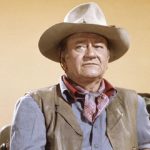It’s a universal truth that the era from 1960 to 1980 gave us some of the best music to date. A lot of the songs from then have stood the test of time and remain popular and familiar even in today’s day and age when we often forget the track we loved and played on loop till a year back. Village People’s Y.M.C.A. is one such song that everybody has heard a time or two, if not more. It plays at sporting and other public events, and people love to dance along in perfect synchronized steps, cause let’s face it – who doesn’t know the steps?
The song Y.M.C.A. is based on the Young Men’s Christian Association and seems to applaud the association’s subsidized temporary housing for young men. The band Village People associates with gay culture and enjoyed a large gay fan following. So while the Y.M.C.A. song seems innocent enough without an ulterior meaning, it soon became a gay anthem. Of course, the association between the Christian association’s name and gay culture didn’t go down too well with the Y.M.C.A.
Let’s look at some interesting facts about the band Village People, the song Y.M.C.A., and of course, the true gay meaning behind Y.M.C.A.
Village People’s Y.M.C.A.
As soon as the Village People’s Y.M.C.A. starts playing, one feels automatically drawn to the dance floor. The perky song has become a cultural phenomenon, with even those who are unaware of most things popular, being familiar with each of the dance steps.
However, not many people know that Y.M.C.A actually picked up as a gay anthem. This fun tidbit about the song loses in the annals of history, and today, from campaign rallies to night bars, Village People’s Y.M.C.A performs everywhere. But how and why did Y.M.C.A become a gay anthem? Other than its groovy disco beats and obviously, the song’s subtext, one of the major reasons why the song picked up as a gay anthem was the fact that during the late 70s, Village People was perhaps the gayest musical act of the decade. Though the group’s lead singer was a straight man, the members of the musical band were quite open about the fact that they created music to target the disco’s prominent gay audience. But is Y.M.C.A. really about gay sex? Well, different people have different opinions.
So, What Was Y.M.C.A and Why Did It Have Gay Connotations?
Y.M.C.A stands for Young Men’s Christian Association. In the late 1970s, the association, especially the McBurney branch of the association in Chelsea, had gained immense popularity as a gay cruising spot. Davidson Garrett, a former resident of the area who lived there between 1978 and 2000, in an interview to local New York website Gothamist said that the McBurney Ywas most certainly a gay-cruising spot, but it was also a place where people went to genuinely workout and stay fit.
Back in the day, the Y was the place where anyone who came to the city with big dreams stayed. One could get single-room residencies for a very affordable price and therefore, the place had become hugely popular in only a short period. However, according to Garrett, the 20- and 30-something men who came to the place for gay cruising restricted their cruising to weekends. More often than not, these people came to enjoy a party, stayed over the weekend, and left at the beginning of the week. Those who stayed at the Y for long were people who needed cheap accommodation to survive in the big city.
Village People Supported Gay Rights in a Homophobic Era
As mentioned before, Village People was perhaps the gayest disco group of the time. No, not every member of the group was gay. However, every member was supportive of the rights of gay people and therefore, projected themselves as a gay entity. In fact, the group’s name ‘Village People’ came from Greenwich Village, a Manhattan neighborhood known for its large gay population.
The members of the disco group not only supported the gay culture through their songs and lyrics but also often showed up at events and in music videos dressed in attires and costumes inspired by Americana. The idea of Village People concocts by French producers Jacques Morali. The idea came to Morali after attending a costume ball in Greenwich Village. At the ball, he witnessed different guests dressed as the ‘macho male stereotypes’.
Morali, therefore, came up with the idea of a disco group that would primarily target the gay community, and with this idea in mind, he succeeded in signing a deal with Casablanca Records. Henry Belolo and Victor Willis joined later, with the former concerning himself with the writing and the latter, singing. The group’s first hits were San Francisco and Macho Man. Their third hit is a song, Crusin’. However, to this day, no one knows what the song is about. With Cruisin’ began Belolo’s habit of creating songs with hidden meanings.
The Story Behind How Y.M.C.A. Was Written
After writing Cruisin’, both Morali and Belolo felt that the album needed another groovy song. Randy Jones, who portrayed the cowboy in the group, revealed in an interview that Morali wrote Y.M.C.A. after paying a visit to the Y.M.C.A gym and David Hodo, who took on the avatar of a construction worker in the group, further revealed that Morali finished the song in just about 20 minutes.
It was Randy who had introduced Morali to the Y.M.C.A gym. Randy joins the McBurney Y.M.C.A. after moving to New York in 1975, but Morali didn’t introduce to the gym until 1977. One fine evening, in 1977, Randy took Morali to the Y and Morali loved the experience. He loved the idea of a place where one could do everything — swim, play basketball, and even stay. More importantly, Morali was gay and at the Y, Randy introduced him to people from the adult film industry he had only seen in videos and magazines. The whole episode inspired him to write a song about the place. In conclusion, Morali got the idea of writing Y.M.C.A. literally after spending a couple of evenings at the Y.M.C.A.
Are you enjoying this video? If yes, keep watching. In a short while, we will tell you not just about the gay meaning behind Y.M.C.A., but also how the song transitioned from being a gay anthem to a pop culture phenomenon. Meanwhile, do not forget to like and subscribe to our channel.
The True Gay Meaning Behind Y.M.C.A
Y.M.C.A. writes by a gay man, and it is about a place that was famous for being a gay cruising spot. Thus, most people assumed that the song had a hidden gay meaning. However, not everyone involved with the song agreed with that idea. Randy Jones, who is an openly gay man and an important member of the disco group, says in an interview that the song was not supposed to be a gay anthem, and there is nothing, gay about the song or the lyrics.
Horace Ott, the famous American jazz and music composer, who created the string arrangements for the Y.M.C.A. revealed in an interview that he had no idea what the song was about. According to Ott, the song certainly had a great beat and Victor’s voice was marvelous. More importantly, Y.M.C.A. comes at a time when disco is booming, and therefore, its success guarantees. However, when asked if Y.M.C.A. had any hidden gay meaning, Ott replied he had no idea, but the song certainly appealed to a lot of gay people.
However, David Hodo, the group’s carpenter/construction worker, convinces that the song means to be a gay anthem. According to Hodo, Y.M.C.A. is most certainly a gay song and Morali wrote it wanting it eventually become a gay anthem. Further, according to Hodo, Y.M.C.A. is a part of the band’s first album and since the group’s target audience is gay men, every song of the album, including Y.M.C.A. writes with gay men in mind. In conclusion, according to Hodo, Y.M.C.A. writes to celebrate gay men and that is why the song ends up being a gay anthem.
So, Is Y.M.C.A. Only for Gay People?
No one knows for sure whether Y.M.C.A. means to be a gay anthem or not. Village People’s Randy Jones was right in saying the song is a mystery. In any case, Y.M.C.A. is a massive hit — the song spends 26 weeks on Billboard’s Top 100. It is a dance hit that plays inside every disco bar. However, after the song climbed down the charts, it slowly transitioned from a gay anthem into a song for everyone. Today, from political rallies to dinner parties, the song plays almost everywhere.
So, how did Y.M.C.A. make that journey? Well, the one thing that played a key role in transitioning Y.M.C.A. from a gay anthem to a super-famous pop song is the dance. In 1979, the group was performing the song on Dick Clark’s American Bandstand. To keep their energy high, each member of the group began clapping their hands above their heads and then something amazing happened. Every time, they raised their hands above their hands for a clap, the audience began singing the vocals along with them. Y.M.C.A. is most certainly a groovy and upbeat song but it is the dance that made it so popular.
The Yankees Field Crew
The Y.M.C.A. dance has become so popular that the Yankees field crew performs it before every home game. How did this tradition start? Joseph Malloy, the former general partner of the team, shed light on this. Malloy shared in an interview that during the opening of Legends Field in Tampa, some crew members came to him with the idea of doing something to increase everyone’s excitement. Thus, it was agreed upon that during the fifth inning, the crew members would do the arms motion to Y.M.C.A. Malloy had never even heard of the song, but he decided to listen to the crew members and gave them a nod. The audiences loved the performance and that is how the tradition started.
Y.M.C.A. has such a catchy tune and the dance is so diverse and fun that it can be performed anywhere. Today, Y.M.C.A. is not a song restricted to gay bars, it is a song that is played in restaurants, on television shows, and even during various sports tournaments. There may or may not be a hidden meaning behind Y.M.C.A. but the song most certainly is a wonderful song that can be enjoyed by all kinds of people.
Y.M.C.A Song Is A Great Piece
Call it a gay anthem or whatever else, you can’t deny that the Y.M.C.A. song is a great piece of music enjoyed the world over. Even after four decades, the song is still played in stadiums and bars, with audiences jumping to join the dance. If you’re one of the few who haven’t heard the song or seen the dance, we suggest you pull up a video right away. You can watch any of the adaptations online or just stream the original video.
If you enjoyed these facts, please click on the like and subscribe button, and don’t forget to hit the bell icon to stay updated on more such videos about fun and interesting facts.


